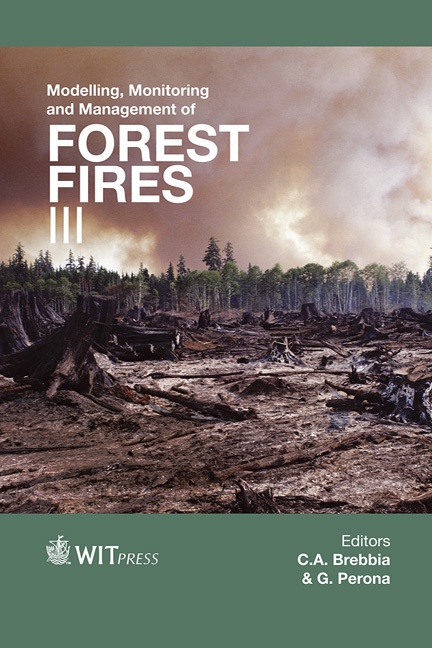Introducing GIS-based Simulation Tools To Support Rapid Response In Wildland Fire Fighting
Price
Free (open access)
Transaction
Volume
158
Pages
12
Page Range
163 - 174
Published
2012
Size
1,878 kb
Paper DOI
10.2495/FIVA120141
Copyright
WIT Press
Author(s)
A. Moreno, A. Segura, S. Zlatanova, J. Posada & A. García-Alonso
Abstract
Once a forest fire is detected, decision makers have to evaluate the situation in order to mobilize all the required resources in the most efficient way. This work presents how a GIS-based simulation tool provides valuable information to the decision makers, so they can trigger rapid and efficient instructions to the individual brigades and fire fighters. The capabilities of the tool allow running independent simulations under hypothetical situations and what-if scenarios, so decision makers can analyze the impact of different actions on a virtual scenario. Keywords: decision making software, decision support system, real time simulation, forest fire spread simulation, GIS-based tool. 1 Introduction Emergency Management field comprises different disciplines, concepts and actors. It is oriented towards the management of the resources and the workforce to protect the society from hazard risks provoked by catastrophic events. In the case of eventual forest fires, Emergency Management triggers the corresponding protocols and procedures, including the mobilization of the local, regional or even national authorities (Civil Protection) and entities (hospitals, police stations, fire stations...). All the actors involved in the task are coordinated from the designed Command Control where all the tactical and logistic decisions are made. A rapid response after the detection of a new forest fire is desirable for multiple reasons, but essentially, it is important to fight and contain the effect of
Keywords
decision making software, decision support system, real time simulation, forest fire spread simulation, GIS-based tool.





